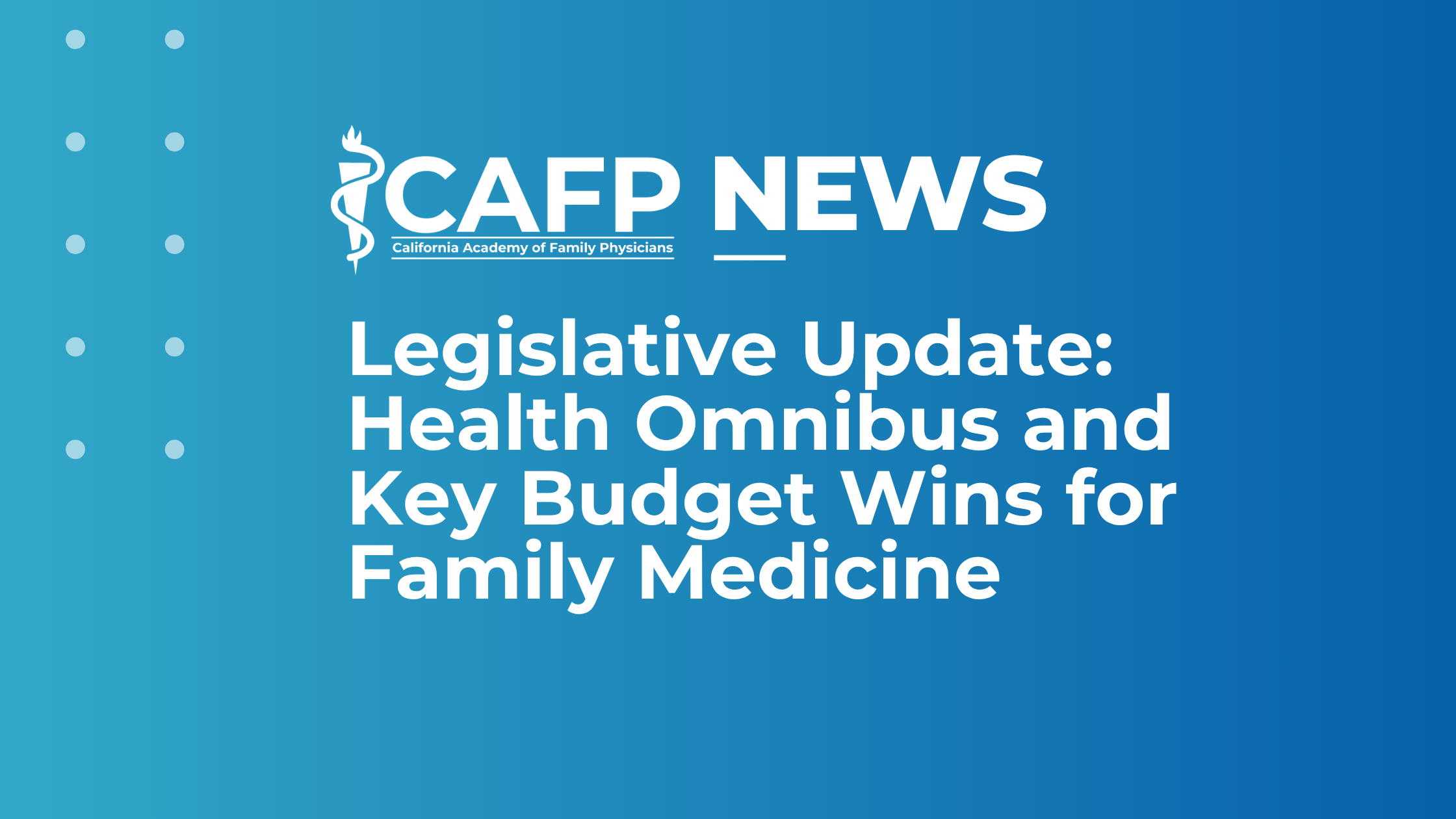Governor Gavin Newsom has signed into law a series of bills to enact California’s 2024–25 state budget, including Assembly Bill 102 (Committee on Budget), Senate Bill 101 (Committee on Budget and Fiscal Review), and the health omnibus trailer bill AB 116. The $321 billion spending plan, which will take effect July 1, closes a projected $12 billion deficit primarily through delayed cuts and borrowing from various state special funds.
While this budget avoids some of the deepest immediate reductions, fiscal analysts warn that California may continue to face significant deficits in the years ahead, challenges that could be compounded by pending federal budget decisions. In fact, lawmakers may return to Sacramento for a special session, which is when the Governor reconvenes the Legislature outside of its regular schedule to address urgent or unforeseen issues, such as mid-year budget shortfalls or policy changes driven by federal action.
Despite a tight budget year, CAFP Secured key funding victories. Notably, the Reproductive Justice Freedom Fund was preserved. CAFP is a proud recipient of this grant, which allowed us to educate more than 1,000 primary care clinicians on reproductive health and abortion care in its first year. With renewed funding, CAFP is now positioned to reach an additional 9,000 clinicians over the next two years.
Additionally, funding for the Song-Brown Program, which supports family medicine residency training, was preserved, although no new investments were made this year.
Key provisions of the budget that pertain to health are:
- Freezes enrollment in Medi-Cal for individuals with undocumented immigration status, ages 19 and older, beginning January 1, 2026. Includes a three-month grace & cure period allowing for re-enrollment. Individuals already enrolled in the program cannot "ageout.”
- Implements a $30 per-month Medi-Cal premium, effective July 1, 2027, for individuals with Unsatisfactory Immigration Status, ages 19 to 59.
- Eliminates Prospective Payment System rates for state-only-funded services provided to individuals with Unsatisfactory Immigration Status no sooner than July 1, 2026.
- Eliminates Medi-Cal pharmacy coverage of certain drug classes, including COVID-19 antigen tests, over-the-counter vitamins, and certain antihistamines including dry eye products.
- Eliminates Medi-Cal pharmacy coverage for Glucagon-Like Peptide-1 (GLP-1) agonists for weight loss, beginning January 1, 2026. GLP-1 agonist drugs would continue to be covered for diabetes. Medi-Cal beneficiaries demonstrating a medical necessity for weight loss medication may still have it approved on a case-by-case basis through prior authorization, and subject to clinically appropriate mechanisms as part of utilization management.
- Implements pre-authorization policies to obtain drugs removed from the Department of Health Care Services' contracted drug list. Includes trailer bill language regarding noticing requirements.
- Implements utilization management for COVID-19 related services in the Medi-Cal program
- Implements step therapy protocols for utilization management and for added control on prescription drug costs.
- Rejects elimination of supplemental Medi-Cal provider payments for family planning services supported by Proposition 56 tobacco tax revenue.
- Rejects elimination of supplemental Medi-Cal provider payments for women’s health services supported by Proposition 56 tobacco tax revenue.
- Suspends the final cohort of the physician and dentist loan repayment program supported by Proposition 56 tax revenue.
- Rejects Governor’s proposal to cancel nearly $60 million of unspent public health funding, including for the California Reducing Disparities Project, support for LGBTQ+ Foster Youth, LBTQ Women’s Health Equity grants, Reproductive Health Justice grants, STD/HepC prevention programs, and public health workforce programs
- Approves the Governor’s proposal to utilize $1.6 billion of Prop 35 funding to offset cost to the General Fund.
CAFP remains committed to advocating for sustained and expanded investments in the primary care workforce, reproductive health access, and health equity, even amid ongoing fiscal uncertainty.
